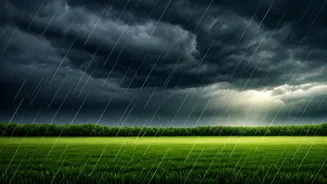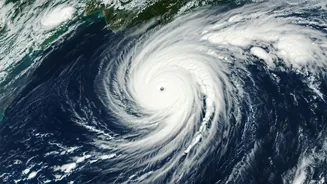Monsoon Overview
The North-East Monsoon, a vital weather phenomenon for India, brings rainfall from October to December. It differs significantly from the South-West Monsoon, with
a reverse wind pattern, originating from the northeast. The analysis of these monsoons is crucial for agriculture, water resource management, and disaster preparedness across various Indian states. Several factors, including global weather patterns, ocean temperatures, and local geographical conditions, impact the monsoon's intensity and distribution. Predicting the monsoon's behaviour in advance is a complex task requiring scientific understanding and the consideration of multiple variables. The reliability of forecasts can vary, highlighting the need for continuous research and improved prediction models. This understanding is particularly important for regions heavily reliant on agriculture.
2020: Previous Predictions
In the context of 2020, forecasting the North-East Monsoon relied on various methodologies, likely including meteorological data analysis alongside astrological interpretations, if the source material is correct. Analyzing planetary positions provided insights into potential weather patterns. These predictions were designed to offer a perspective on the monsoon's behavior and the expected impacts on different regions. Forecasts might have considered rainfall amounts, distribution across states, and any potential for extreme weather events. The agricultural sector, in particular, highly valued such predictions, enabling farmers to make informed decisions regarding crop selection, irrigation practices, and preparedness measures. The effectiveness of the predictions would have been assessed by comparing the forecast outcomes with the actual monsoon performance. This comparison would help refine forecasting models and improve accuracy for future predictions.
2022: Forecast Insights
For 2022, the forecasts for the North-East Monsoon probably involved a mix of traditional meteorological methods with potential astrological interpretations. The models possibly incorporated data from previous years, analyzing atmospheric conditions, and considering the influence of global climate factors. The forecasts for 2022 may have detailed rainfall expectations, pinpointing specific areas likely to receive significant rainfall or, conversely, face drought conditions. These predictions aimed to help government agencies, farmers, and other stakeholders to plan and react effectively. The information, potentially, covered the timing, intensity, and geographical distribution of the monsoon. Detailed regional analyses would have likely been provided, focusing on states most impacted by the North-East Monsoon, like Tamil Nadu and Andhra Pradesh. It is important to remember that these are forecasts and actual weather conditions may differ.
Saturn in Pisces
The transit of Saturn through Pisces, a major astrological event, might be considered in monsoon forecasts for 2025. Astrological interpretations often associate planetary positions with the Earth's weather patterns. The concept of Saturn in Pisces suggests the influence of planetary movements on atmospheric behavior, influencing the intensity and the timing of the North-East Monsoon. Astrological forecasts often consider the elements represented by each zodiac sign. Pisces, linked with water, might be expected to influence rainfall. These interpretations must be viewed with an understanding of both astrological principles and weather science. Understanding the interaction between Saturn's positioning and atmospheric phenomena requires a comprehensive approach, combining traditional meteorological forecasting with astrological analysis. It is important to evaluate these interpretations with caution, as weather patterns are influenced by complex factors.
Forecasting Methodology
Forecasting the North-East Monsoon is a complex undertaking, relying on various methods. Traditional meteorological approaches involve analyzing historical weather data, current climate conditions, and the use of sophisticated computer models. Climate models simulate global atmospheric behavior, incorporating data from satellites, weather stations, and ocean buoys. Statistical methods are also applied to identify patterns and trends in past monsoon behavior. The use of astrology is an alternative, drawing on the positions of celestial bodies to provide insights into potential weather changes. Forecast accuracy relies on extensive data collection, robust modeling, and continuous improvements in the understanding of climate factors. Regular calibration against actual monsoon performance is essential for fine-tuning forecasting models. Continuous investment in research and technology helps improve the reliability of predictions and aids in better preparedness for the monsoon season. Accurate and reliable forecasts are crucial for agricultural planning, water resource management, and disaster risk reduction, benefiting various segments of society.
Impact & Significance
The North-East Monsoon significantly impacts various sectors, particularly agriculture. The rainfall is a source of irrigation, vital for planting and nurturing crops. Furthermore, adequate rainfall during this season influences water resource management and the filling of reservoirs across several regions. The monsoon's impact extends to industries such as power generation and drinking water supplies. An intense monsoon can bring about flooding, causing damage to infrastructure and displacing populations. On the other hand, a weak monsoon can result in droughts, leading to crop failures and water shortages. The accuracy of monsoon predictions is important for agricultural planning, disaster preparedness, and water management. Early and reliable forecasts help farmers, policymakers, and communities better prepare for the impacts of the monsoon season. The understanding of the monsoon is critical for the socio-economic stability of India, as it directly impacts livelihoods and the overall economy.















